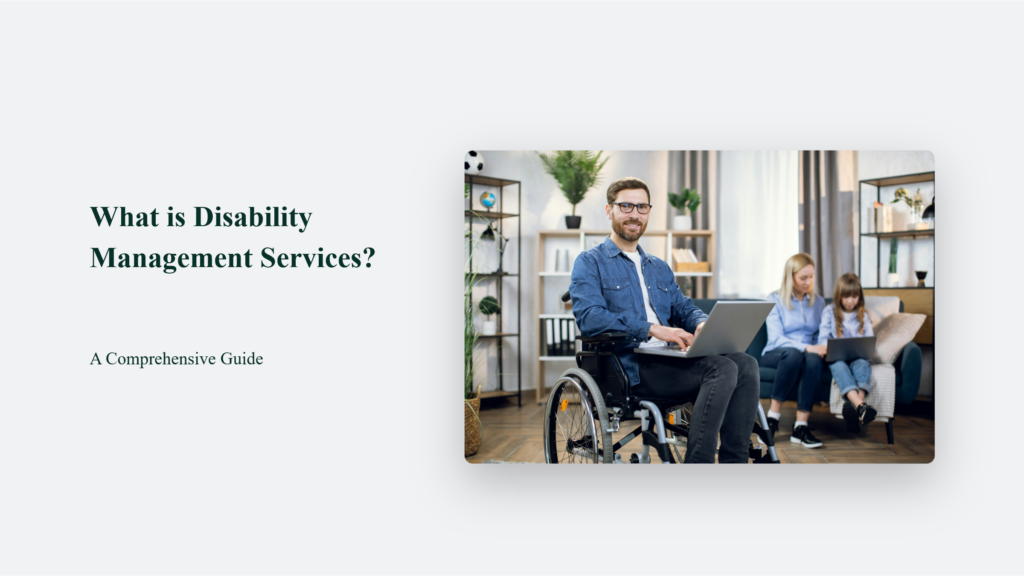In Australia, nearly one in six people live with some form of disability. That’s about 4.4 million Australians who may require support to lead fulfilling lives and participate fully in society. But what exactly are the services that cater to this significant portion of our population? What is disability management services, and why are they crucial in today’s world?
Disability management services play a pivotal role in supporting individuals with disabilities, their families, and even employers. These services encompass a wide range of activities designed to promote independence, facilitate integration, and improve the quality of life for people with disabilities. But to truly understand their impact, we need to delve deeper into what these services entail and how they’re shaping the landscape of disability support in Australia.

What is Disability Management Services?
Disability management services refer to a coordinated, proactive process of supporting individuals with disabilities to achieve their maximum functional capacity, independence, and participation in all aspects of life. These services go beyond traditional medical interventions, taking a holistic approach that considers the physical, psychological, social, and environmental factors affecting a person’s life.
At its core, disability management services aim to:
- Enhance the quality of life for individuals with disabilities
- Promote independence and self-determination
- Facilitate successful integration into the community and workplace
- Reduce the impact of disability on individuals, families, and society
- Optimise the use of resources and support systems
Unlike traditional disability support, which often focuses solely on medical care or basic assistance, disability management services take a more comprehensive and proactive approach. They emphasise prevention, early intervention, and ongoing support to help individuals with disabilities live their best lives.
The Evolution of Disability Management in Australia
The landscape of disability support in Australia has undergone significant changes over the past few decades. From institutional care to community-based support, the journey has been marked by shifting paradigms and evolving policies.
In the 1980s, Australia began moving away from the medical model of disability towards a social model. This shift recognised that many of the challenges faced by people with disabilities were not inherent to their conditions but were instead the result of societal barriers and attitudes.
Key milestones in this evolution include:
- The Disability Services Act 1986, emphasised the rights of people with disabilities to live and participate in the community.
- The Disability Discrimination Act 1992 made it illegal to discriminate against a person because of their disability.
- The ratification of the UN Convention on the Rights of Persons with Disabilities in 2008
- The introduction of the National Disability Insurance Scheme (NDIS) in 2013
Today, disability management services in Australia operate within a framework that prioritises choice, control, and individualised support. The NDIS, in particular, has revolutionised the way services are funded and delivered, giving people with disabilities more say in the support they receive.
Core Functions of Disability Management Services
Disability management services encompass various functions, all aimed at supporting individuals with disabilities to lead fulfilling lives. Let’s explore some of the key areas:
Assessment and Planning
One of the first steps in disability management is a comprehensive assessment of an individual’s needs, abilities, and goals. It involves:
- Evaluating physical and cognitive functions
- Assessing psychosocial factors
- Identifying environmental barriers and facilitators
- Understanding the individual’s personal goals and aspirations
Based on this assessment, a personalised plan is developed. This plan outlines the supports and services required to meet the individual’s needs and achieve their goals.
Coordination of Care and Support
Disability management often involves coordinating a complex network of services and supports. It might include:
- Medical and allied health services
- Personal care assistance
- Education and employment support
- Community access programs
- Assistive technology and equipment
The role of disability management services is to ensure these various elements work together seamlessly to support the individual’s overall well-being and goals.
Advocacy and Empowerment
Empowering individuals with disabilities to advocate for themselves is a crucial aspect of disability management. It involves:
- Providing information about rights and entitlements
- Supporting decision-making processes
- Facilitating self-advocacy skills development
- Advocating on behalf of individuals when necessary
Return-to-Work Programs
For many individuals with disabilities, returning to work or finding employment is a key goal. Disability management services play a vital role in this process by:
- Assessing work capabilities and limitations
- Identifying suitable job opportunities
- Liaising with employers about workplace accommodations
- Providing ongoing support to ensure successful job retention
The Role of Technology in Modern Disability Management
In recent years, technology has revolutionised the field of disability management, opening up new possibilities for support and independence. Here are some key areas where technology is making a difference:
Digital Platforms for Service Coordination
Cloud-based platforms are increasingly being used to coordinate disability services. These systems allow for:
- Real-time communication between service providers
- Centralised storage of client information and support plans
- Efficient scheduling and tracking of services
- Enhanced reporting and accountability
Assistive Technologies
Advancements in assistive technology are continually expanding the possibilities for individuals with disabilities. Some examples include:
- Voice-activated home automation systems
- Eye-gaze technology for communication
- Exoskeletons for mobility assistance
- Smart prosthetics
Data-Driven Decision Making
The use of data analytics in disability management is growing, allowing for:
- More accurate prediction of support needs
- Identification of trends and patterns in service usage
- Evidence-based evaluation of service effectiveness
- Improved resource allocation
Challenges and Opportunities in Disability Management
While disability management services have come a long way, there are still challenges to overcome and opportunities to seize.
Funding and Resource Allocation
The introduction of the NDIS has significantly increased funding for disability services in Australia. However, challenges remain in ensuring equitable access to services, particularly in rural and remote areas. There’s also an ongoing need to balance individualised funding with the sustainability of the overall system.
Workforce Development and Training
As the disability sector grows, so does the need for skilled professionals. Key challenges include:
- Attracting and retaining qualified staff
- Providing ongoing professional development
- Ensuring cultural competence in service delivery
Balancing Personalisation with Standardisation
While personalised support is a cornerstone of modern disability management, there’s also a need for some level of standardisation to ensure quality and efficiency. Striking the right balance is an ongoing challenge for the sector.

The Future of Disability Management Services
As we look to the future, several trends are likely to shape the landscape of disability management services:
Emerging Trends and Innovations
- Greater emphasis on co-design of services with people with disabilities
- Increased focus on social and economic participation outcomes
- Growing integration of mental health and disability services
Potential Impact of AI and Machine Learning
Artificial intelligence and machine learning have the potential to revolutionise disability management by:
- Predicting support needs more accurately
- Personalising interventions based on individual data
- Enhancing the capabilities of assistive technologies
The Shift Towards More Inclusive Societal Models
The future of disability management is likely to see a continued shift towards more inclusive societal models. This means moving beyond just providing services to actively reshaping society to be more accessible and inclusive for all.
Conclusion
So, what is disability management services? As we’ve explored, it’s a comprehensive, person-centred approach to supporting individuals with disabilities to lead fulfilling lives and participate fully in society. From assessment and planning to care coordination, from leveraging cutting-edge technology to advocating for systemic change, disability management services play a crucial role in Australia’s disability support landscape.
As we continue to evolve our understanding of disability and refine our approaches to support, the potential for disability management services to transform lives and society as a whole is immense. By continuing to innovate, adapt, and, most importantly, listen to the voices of people with disabilities, we can work towards a future where everyone has the opportunity to thrive, regardless of ability.
The journey towards truly inclusive disability management services is ongoing, and it requires the commitment and collaboration of all sectors of society. Whether you’re a person with a disability, a family member, a service provider, or simply a concerned citizen, you have a role to play in shaping this future. Let’s continue to push boundaries, challenge assumptions, and work together to create a world where disability management services are not just support systems but catalysts for societal transformation.
Frequently Asked Questions:
How are technology and disability management services connected?
Technology plays an increasingly important role in disability management services. This includes the use of digital platforms for service coordination, assistive technologies to enhance independence, and data analytics for more effective service planning and delivery.
Can disability management services help with employment?
Yes, many disability management services include return-to-work programs and employment support. These can involve assessing work capabilities, identifying suitable job opportunities, arranging workplace accommodations, and providing ongoing support for job retention.




